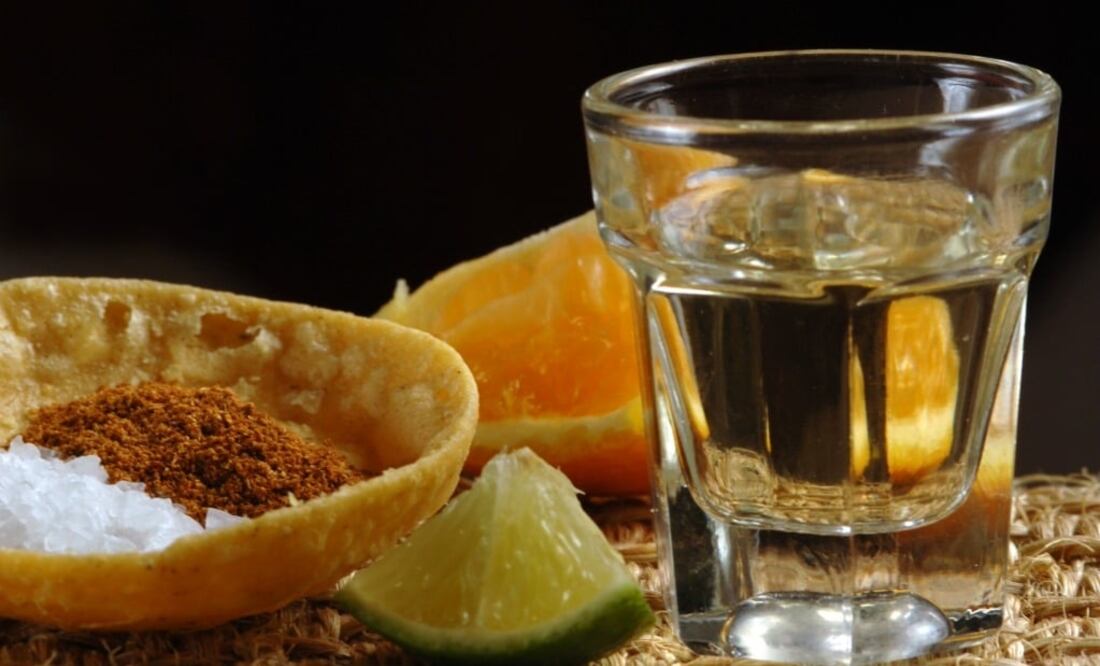Más Información

Sergio Gutiérrez Luna destaca aprobación de 25 reformas en la 66 Legislatura; "Un logro histórico para la 4T", señala

Secretario de Agricultura reafirma defensa del maíz blanco; "Seguiremos apoyando la producción nacional no transgénica", afirma

¿Maíz transgénero? Rubén Rocha corrige desliz durante discurso en Sinaloa; destaca importancia del maíz blanco

Sheinbaum asegura apoyo total a Sinaloa para enfrentar violencia; "Nunca los vamos a dejar solos, aquí está la presidenta"

Dictan 600 años de prisión a "El Negro" Radilla y "El Cone"; responsables de secuestrar al hijo de Javier Sicilia

Familias de desaparecidos en Mazatlán irrumpen en evento de Sheinbaum; mandataria promete atender peticiones
There is no doubt that mezcal has seen a massive boom in popularity in recent years. The hard liquor made from the heart of the agave plant is the fastest growing liquor in Mexico and many specialists and buyers from around the world claim it's the “hottest” new drink that's worth discovering. In fact, in 2011, production increased by 48% and in 2014, 1.45 million liters of mezcal were produced in Mexico.

Mezcal, which is made fom any of over 30 pieces of agave unlike Tequila that's made exclusively from a single species of agave, continues to be made much the same way it's been made for hundreds of years. Many authorized mezcal producers continue to use traditional, artisanal and ancestral technologies over modern ones.
“There's no comparison when it comes to Mezcal. It's a unique distilled drink whose perfection comes from not only one of the most rudimentary processes in the industry, but one of the most complex, too,” shared José López García, a mezcal expert from Oaxaca, where most mezcal is made today.
“Mezcal is made thanks to the experience of Mezcal Masters, experts in the art of making mezcal. Thanks to their wealth of experience and knowledge, it is possible to make a perfect mezcal,” he continued.
The boom in mezcal production has helped bring economic and social development to areas that produce the drink. For example, in Santiago Matatlán, the self-proclaimed “World Capital of Mezcal,” long are the days when the area's traditional manufacturers of mezcal were on the verge of dissappearing. In its worst moment, less than a dozen manufaturers remained, but now there are over 130 small manufacturers in the area alone, most of which are family owned businesses.
For Don Baltazar Cruz, a Master Mezcal producer from San Luis del Río in the sierra's of Oaxaca and owner of the Mezcal Lluvia de Maguey brand, he says that thanks to the industry's boom in popularity, many producers, who used to simply sell their products to mass-produced labels, have gone on to launch and sell their own brands.
“I've been in the business for over 30 years now. I produce mezcal exactly how my ancestors used to produce it and for the first time we're seeing positive changes in the industry. I continue to sell my product to bigger, mass-produced labels, but I now also sell my own brand.”
“After years of neglect from the government, this golden age in the production of mezcal has brought us many benefits. However, even though we're on the right path, there's still a lot of work to do,” said Don Baltazar.
Don Baltazar argues that now that demand for the product is at its highest point in its history, local producers have to work hard towards educating the world on the art of manufacturing mezcal and share their passion and culture as a way to ensure that consumers choose their traditional and artisanal product over mass-produced, commercial mezcal.
“There's no doubt in my mind that we're on the right path. Conserving our traditional methods for manufacturing mezcal is a key aspect of our industry and today, more than ever before, consumers are starting to choose 'artisanal' made products over the mass-produced.”
Mezcal is an alcoholic beverage that is made by distilling juices fermented with Mexican wild or cultivated yeast, that are extracted from the hearts of mature and oven-cooked agave plants.
Furthermore, mezcal has been recognized as an Appellation of Origin since 1994 and this recognition was expanded and recognized as law in 2003, which limits the production of mezcal to the states of Guerrero, Oaxaca, Durango, San Luis Potosí, Zacatecas, Michoacán, Tamaulipas, Puebla and Guanajuato. The regulation also limits production to 150 spieces of agave that are endemic to Mexico, and cannot be made using the Tequilana Weber Azul variety, which is the only type of agave that can be used to produce mezcal's famous cousin, Tequila. In addition, mezcal's alcohol content must be between 36% and 55%.
The final aroma and flavor of the drink is not only a result of the variety of agave used, but is also affected by the region's climate and, most importantly, the method used by the Mezcal Master to make the drink.
There are currently several types of mezcal: White (not aged and has no color or hue), Madurado en Vidrio (aged for a minimum of 12 months in glass barrels), Reposado (aged between 2 and 12 months in wooden barrels), Añejo (aged over 12 months in wooden barrels) and Abocado (mezcal with added ingredients intended to modify its final flavor).
Sources: Consejo Mexicano Regulador de la Calidad del Mezcal and PROY-NOM-070-SCFI-2015




